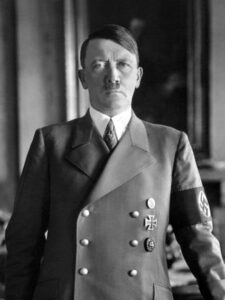The history of Germany is rich and diverse, spanning from ancient times to modern days. It’s characterized by the rise and fall of various kingdoms, empires, and political entities. Some key points include:
- Ancient and Medieval Periods: The area now known as Germany was inhabited by various Germanic tribes during the Roman Empire. The Holy Roman Empire emerged in the Middle Ages as a loose confederation of states. The Reformation in the 16th century led to religious tensions and the Thirty Years’ War.
- Modern Era: The 19th century saw the unification of Germany under Otto von Bismarck, leading to the creation of the German Empire in 1871. This empire lasted until the end of World War I in 1918.
- Interwar Period: After World War I, Germany faced economic challenges and political instability. The Weimar Republic emerged but struggled with social and economic issues.
- Nazi Era and World War II: Adolf Hitler’s rise to power in the 1930s led to the establishment of a totalitarian Nazi regime. This era included aggressive expansion and atrocities like the Holocaust. World War II, from 1939 to 1945, had devastating effects on Germany and the world.
- Post-War Division and Reunification: After World War II, Germany was divided into East and West Germany, with the Berlin Wall separating East and West Berlin during the Cold War. The wall fell in 1989, leading to the eventual reunification of Germany in 1990.
- Modern Germany: Following reunification, Germany became a major economic and political power in Europe. It’s known for its role in the European Union and its strong economy.
ADOLF HITLER (1889-1945)
Adolf Hitler was born on April 20, 1889, in Braunau am Inn, Austria. He initially aspired to become an artist but later became involved in politics. Here’s a concise overview of his life and rise to power:
- Early Life and Background: Hitler grew up in Linz, Austria, and later moved to Vienna to pursue a career in art. He was twice rejected by the Academy of Fine Arts Vienna. In 1913, he moved to Munich, Germany.
- World War I and Early Political Involvement: When World War I broke out, Hitler volunteered for the German Army and served as a soldier. After the war, he joined the German Workers’ Party (DAP), which later became the National Socialist German Workers’ Party (NSDAP), or Nazi Party.
- Rise to Power: Hitler’s skills as an orator and propagandist helped him gain attention within the Nazi Party. He became its leader in 1920 and outlined the party’s beliefs in his book “Mein Kampf.” The economic hardships and political turmoil in Germany during the 1920s and early 1930s created an environment where extremist parties gained support.
- Chancellorship and Dictatorship: In 1933, Hitler was appointed Chancellor of Germany by President Paul von Hindenburg. After the Reichstag fire in February 1933, the Nazi Party intensified its control over the government. The Enabling Act granted Hitler the authority to enact laws without Reichstag approval, effectively establishing a dictatorship.
- Expansionist Policies and World War II: Hitler pursued an aggressive foreign policy aimed at territorial expansion. He annexed Austria (Anschluss) in 1938 and later demanded the Sudetenland from Czechoslovakia, leading to the Munich Agreement. In 1939, Hitler’s invasion of Poland marked the beginning of World War II.
- Holocaust and Atrocities: The Nazi regime implemented systematic persecution and murder of millions, primarily targeting Jews. This event is known as the Holocaust. Concentration camps and extermination camps were used to carry out these atrocities.
- Downfall and End of World War II: As Allied forces closed in on Germany, Hitler’s grip on power weakened. In April 1945, he realized defeat was imminent and committed suicide in his underground bunker in Berlin on April 30, 1945.
- Legacy and Impact: Hitler’s actions and policies led to the deaths of millions and brought about unprecedented destruction during World War II. His ideology of Aryan supremacy, anti-Semitism, and totalitarianism left a lasting impact on world history.
HOW DID ADOLF HITLER DIE?
Adolf Hitler died by suicide on April 30, 1945, in his underground bunker in Berlin, Germany. As Soviet forces closed in on the city during the final days of World War II, Hitler realized that defeat was imminent and chose to end his life rather than be captured by the advancing Allied forces.
According to historical accounts and eyewitness testimonies from his close associates who were in the bunker with him, Hitler shot himself in the head while simultaneously biting down on a cyanide capsule. His wife, Eva Braun, whom he had married just a day earlier, also ingested cyanide and died beside him.
After their deaths, their bodies were carried outside, doused in petrol, and set on fire by loyal aides. The exact location of their remains was kept secret to prevent them from becoming objects of veneration. The Soviet forces took control of Berlin shortly afterward.
Hitler’s suicide marked the end of his reign as the leader of Nazi Germany and the conclusion of his efforts to establish a totalitarian regime based on Aryan supremacy and expansionist policies.




cialis side effects forum